Ashley Boys Home and Updating Find & Connect
- Jan 28, 2022
- In Features
We often ask people who spent time in care to provide feedback on the information we provide about institutions in Australia, and the history of child welfare generally.
In the same way that records kept about children in care were reflective of the interests of the institution and with little consideration of the person whose life was being recorded, historical documents can reflect a specific view of history which does not fully consider the impact of a life in care.
The first of a series of articles in The Mercury, 1944, that presented the Home in a positive light
Original records were often poorly kept. Documents recording the history of a place can be scant, reflective only of the experience of those managing the institutions, and influenced by the values of the time. While we attempt to find as much information on the institutions we document as possible, in some instances we are forced to rely on the official record. Where institutions have changed name, purpose or location these dates may not have been recorded accurately. This historical information can be corrected by those with direct experience of the institution, or the broader welfare system in Australia at the time.
These historical documents also lack the voice of those who experienced care. Often, the only record of childrens’ experiences of care are found in the records of inquiries into significant incidents, such as riots. Official documents released by the institutions were often focused around fund raising, are reports to a committee where positive initiatives and successes were related, or otherwise painted life in care in a rosy light.
When we hear from people who experienced care, or who otherwise have knowledge of institutions, we are able to investigate further, finding new avenues of research or newly released records, and can incorporate the voices of those best placed to provide the context and experience of what life in care was like.
“Building Youth” The Mercury, 1944
Ashley Home for Boys is an institution where we were able to provide important, new information after hearing from a previous resident. We were contacted by the resident with concerns about the type and veracity of information that had been recorded, including that official documents exaggerated the benefits of life in the Home, and that activities and initiatives the institution claimed to carry out for the children had never happened.
Following this initial contact, we were able to find two newly available research reports into the Home, which provided new and additional information to what had been available previously. Prior to these new reports, we had to rely heavily on Superintendent’s reports and newspaper articles from the time.
Using the new research, we were able to unearth additional newspaper articles which clarified some of the information we had already provided, and better documented some of the changes undertaken at the Home.
The Mercury, 1944
Whilst the original information provided a stark insight into the difficulties of life in the Home, those with the experience of living there found it overly positive. We have since incorporated new information to give a more honest and authentic account of life in the home, reflective of the experiences of the children who lived there rather than an account provided on their behalf.
As we continue our work updating the website for both content and design, launching as a more accessible www.findandconnect.gov.au later this year, we will continue to seek new information about the institutions on the site, particularly from the point of view of the children who experienced them. If you have any information or experiences to share about life in care, please contact us. We have recently redesigned our contact form to make it easier to do just that. Go to our contact form choose ‘Feedback’ and we’ll get back to you about updating the information on the site.



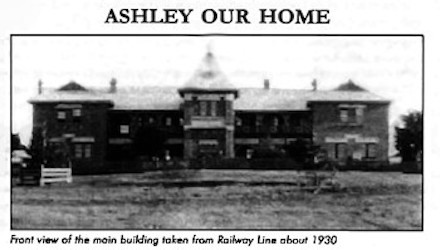
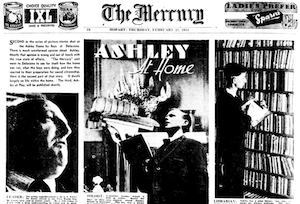
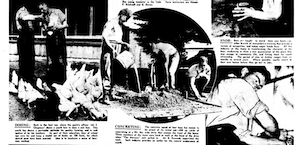
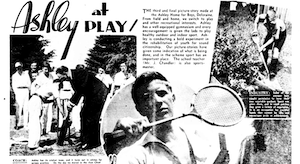
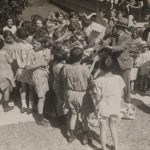
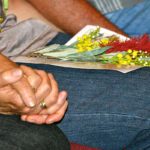

John Deller
January 28, 2022 10:04 amWow your talking about 1944 how many would still be a live what help could be done . I’m a ex BoysTown boy I went to talk to a Royal commissioner to help kids today now I’m lucky to be e voided in the disability Royal commission and I was in care and ward of the state from 7 to 18 and I only found out early last year iv been dyslexic and prossing disorder and more all my life plus’s 22 years as a adult wrongly denoeinnosed and over medicalted my life’s been hell all my life you find and connect never once helped can you help me now at all or any I a joke still my partner past way in may last year not from virus and in this new Royal commission you have no idea mental health and gov housing are all going to be mentioned how about giving me a call
Find & Connect
January 28, 2022 10:10 amThanks for your comment John, we’ll follow up with you personally.
Ellen
January 28, 2022 11:21 amJohn
Your story is so common to many of those that were I homes. I was admitted to the ‘system’ in 1956 at aged 4 years along with my 3 year old brother and 5 year old sister. I also, after many years in care and of abuse 11 placements till age 13 have endured a lifetime of mental health in facilities. Numerous neurological problems. No monies or services paid toward our health care. I lost my siblings as never placed together, lost my innocence. Does Find and Connect REALLY want the stories and events of what happened to us at institutions or will they hide it under the carpet like the Federal Government has done. Years after the Commission and we as Forgotten Australians are still waiting for hospitals/nurses/community to be trained.
Very few know what an FA is.
Find & Connect
January 28, 2022 1:29 pmThanks for your comment. When we are contacted about the information on our site by a person who spent time in care, we work with them to represent their experience in an appropriate way that is safe for everyone who accesses the site. In this way we acknowledge the experience of life in care without detailing deeply personal traumatic events that can be triggering and re-traumatising for many. If a former resident prefers to express that a page may be incomplete or incorrect without providing further information or sharing their own story, we will research further based on what they’ve told us and update accordingly. It looks like we were working with you on updating some information back in 2020 and we are really happy to continue that work whenever you would like to continue. If you are in need of support, you can access a Find & Connect support service in your state here: https://www.findandconnect.gov.au/contact/support-service/